Dacia Jogger vs Renault Captur – Differences & prices compared
Compare performance, boot space, consumption and price in one view.
Find out now: which car is the better choice for you – Dacia Jogger or Renault Captur?
The Dacia Jogger (MPV) comes with a Full Hybrid, LPG or Petrol engine and Automatic or Manuel transmission. In comparison, the Renault Captur (SUV) features a Petrol MHEV, Petrol or Full Hybrid engine with Manuel or Automatic transmission.
When it comes to boot capacity, the Dacia Jogger offers 607 L, while the Renault Captur provides 422 L – depending on how much space you need. If you’re looking for more power, decide whether the 140 HP of the Dacia Jogger or the 158 HP of the Renault Captur suits your needs better.
In terms of consumption, the values are 4.70 L per 100 km for the Dacia Jogger, and 4.50 L for the Renault Captur.
Price-wise, the Dacia Jogger starts at 15400 £, while the Renault Captur is available from 20100 £. Compare all the details and find out which model fits your lifestyle best!
In the realm of budget-friendly crossovers, the Dacia Jogger and Renault Captur both present appealing options for families and individuals alike. The Dacia Jogger stands out with its spacious interior and remarkable flexibility, offering an impressive seven-seat configuration, which is a rarity at its price point. Meanwhile, the Renault Captur captivates with its chic design and superior technological features, providing a more refined drive with its modern infotainment system and upscale cabin materials.
Dacia Jogger
The Dacia Jogger offers a spacious and versatile interior, making it an excellent choice for families seeking practicality and comfort. Its design combines the robustness of an SUV with the functionality of an estate, providing a reliable option for various driving needs. With a focus on affordability, the Jogger ensures that essential features are accessible without compromising on quality.
details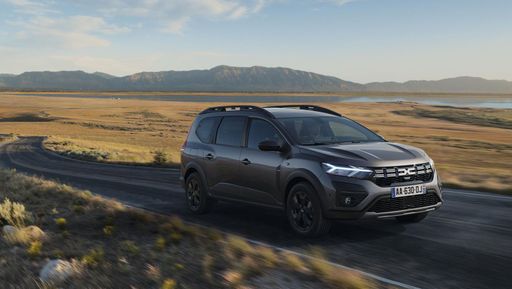 @ dacia-presse.de
@ dacia-presse.de
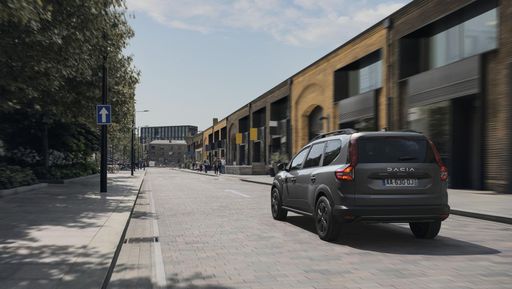 @ dacia-presse.de
@ dacia-presse.de
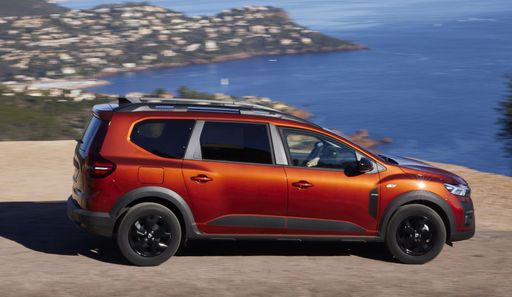 @ dacia-presse.de
@ dacia-presse.de
 @ dacia-presse.de
@ dacia-presse.de
Renault Captur
The Renault Captur is a compact SUV that combines stylish design with practical functionality, making it a popular choice for urban drivers. Its interior offers a versatile and comfortable space, featuring high-quality materials and modern technology. On the road, the Captur delivers a smooth and efficient driving experience, perfect for both city commutes and weekend adventures.
details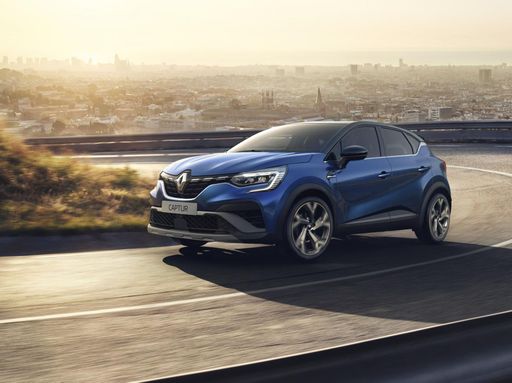 @ renault-presse.de
@ renault-presse.de
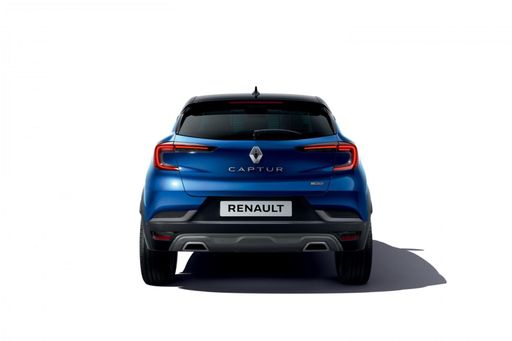 @ renault-presse.de
@ renault-presse.de
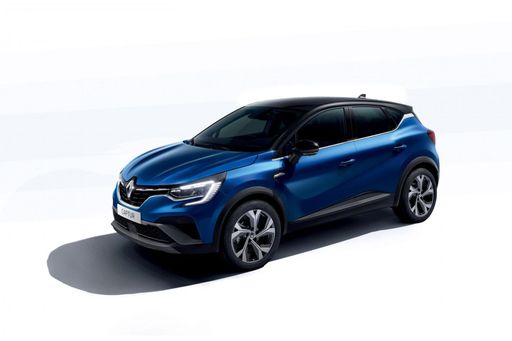 @ renault-presse.de
@ renault-presse.de
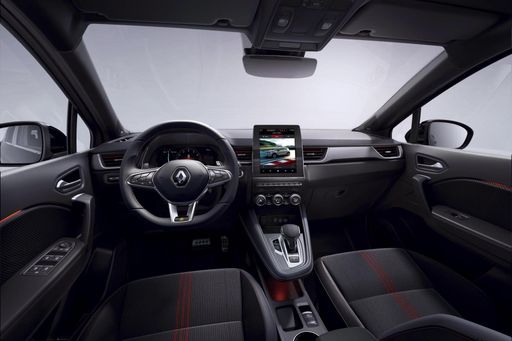 @ renault-presse.de
@ renault-presse.de
Battle of the Budgets: Dacia Jogger vs. Renault Captur
The automotive world has long been fascinated by the classic clash between value and versatility. With the 2024 models, Dacia and Renault present us with two stalwarts in the affordable yet impressive segment: the Dacia Jogger and the Renault Captur. As these two cars take to the stage, let's delve into their technical intricacies and innovative offerings.
Design and Dimensions
Design, often the first aspect that catches the eye, sets the stage for our comparison. The Dacia Jogger, an MPV, measures a lengthy 4547 mm, lending it the substantial profile necessary for a spacious family hauler. In contrast, the Renault Captur, positioned as a compact SUV, measures 4239 mm in length, promising agility over sheer size.
The larger dimensions of the Jogger translate into more interior space, capable of seating up to seven passengers, unlike the Captur's five-seat configuration. However, the Captur compensates with its superior urban maneuverability, making it a better choice for city dwellers.
Engine and Performance
Both the Jogger and Captur offer a variety of engine options, ensuring adaptability to different driving needs. The Jogger provides a range from 91 HP to 140 HP, with a front-wheel drive across its offerings. The hybrid variant, boasting a 0.6 kWh battery, promises an efficient consumption of 4.7 L/100km.
The Captur, with its slightly more powerful range starting at 91 HP and going up to 158 HP, introduces a performance edge, especially with its dual-clutch automatic transmission option. Its hybrid variant also presents a consumption of 4.7 L/100km, offering a balance between eco-friendly driving and spirited performance.
Interior and Features
Inside, the Dacia Jogger prioritizes space and practicality. It offers a generous 607 L of trunk space, easily expandable with the rear seats folded. The Renault Captur, though offering a smaller boot space of 422 L, focuses on high-quality materials and tech integration, appealing to those seeking a modern interior atmosphere.
While Dacia banks on simplicity and functionality, Renault equips the Captur with an array of modern features, from intuitive infotainment to advanced driver assistance systems. This showcases the Captur's edge in providing a connected and safe driving experience.
Fuel Efficiency and Environmental Aspects
Both cars exhibit commendable fuel efficiency. The Jogger's variety of engines offer consumption figures ranging between 4.7 to 7.7 L/100km, positioning it well for those conscious of their fuel budget. On the emissions front, both cars find themselves in similar CO2 efficiency classes of C and D, underscoring their status as environmentally responsible choices.
Conclusion: Deciding Between the Jogger and the Captur
The Dacia Jogger vs. Renault Captur debate is one defined by trade-offs in size, performance, and features. The Jogger’s appeal lies in its spaciousness and practicality, making it an ideal choice for larger families or those in need of abundant cargo space. Meanwhile, the Captur, with its compact size and modern features, appeals to urban drivers seeking style and technology.
In essence, the choice boils down to personal preference, driving habits, and lifestyle needs. Both models are ready to carve a niche in their respective segments while offering value without compromising quality.

|

|
|
|
|
Costs and Consumption |
|
|---|---|
|
Price
15400 - 23400 £
|
Price
20100 - 28300 £
|
|
Consumption L/100km
4.7 - 7.7 L
|
Consumption L/100km
4.5 - 6 L
|
|
Consumption kWh/100km
-
|
Consumption kWh/100km
-
|
|
Electric Range
-
|
Electric Range
-
|
|
Battery Capacity
0.60 kWh
|
Battery Capacity
-
|
|
co2
105 - 137 g/km
|
co2
102 - 135 g/km
|
|
Fuel tank capacity
40 - 50 L
|
Fuel tank capacity
48 L
|
Dimensions and Body |
|
|---|---|
|
Body Type
MPV
|
Body Type
SUV
|
|
Seats
5 - 7
|
Seats
5
|
|
Doors
5
|
Doors
5
|
|
Curb weight
1251 - 1460 kg
|
Curb weight
1293 - 1514 kg
|
|
Trunk capacity
160 - 607 L
|
Trunk capacity
326 - 422 L
|
|
Length
4547 mm
|
Length
4239 mm
|
|
Width
1784 mm
|
Width
1797 mm
|
|
Height
1674 mm
|
Height
1575 mm
|
|
Payload
393 - 582 kg
|
Payload
376 - 457 kg
|
Engine and Performance |
|
|---|---|
|
Engine Type
Full Hybrid, LPG, Petrol
|
Engine Type
Petrol MHEV, Petrol, Full Hybrid
|
|
Transmission
Automatic, Manuel
|
Transmission
Manuel, Automatic
|
|
Transmission Detail
Automatic Gearbox, Manual Gearbox
|
Transmission Detail
Manual Gearbox, Dual-Clutch Automatic, Automatic Gearbox
|
|
Drive Type
Front-Wheel Drive
|
Drive Type
Front-Wheel Drive
|
|
Power HP
91 - 140 HP
|
Power HP
91 - 158 HP
|
|
Acceleration 0-100km/h
9.8 - 13.2 s
|
Acceleration 0-100km/h
8.5 - 14.3 s
|
|
Max Speed
167 - 174 km/h
|
Max Speed
168 - 180 km/h
|
|
Torque
160 - 200 Nm
|
Torque
160 - 270 Nm
|
|
Number of Cylinders
3 - 4
|
Number of Cylinders
3 - 4
|
|
Power kW
67 - 103 kW
|
Power kW
67 - 116 kW
|
|
Engine capacity
999 - 1598 cm3
|
Engine capacity
999 - 1789 cm3
|
General |
|
|---|---|
|
Model Year
2024 - 2025
|
Model Year
2024 - 2025
|
|
CO2 Efficiency Class
C, D
|
CO2 Efficiency Class
D, C
|
|
Brand
Dacia
|
Brand
Renault
|
Dacia Jogger
Introducing the Dacia Jogger: A New Era of Affordable Versatility
The Dacia Jogger has revolutionised the automotive industry by combining practicality and cost-efficiency with innovative features. This multi-purpose vehicle is perfect for families and adventurers alike, offering remarkable versatility alongside a competitive pricing strategy.
Powertrain Options: A Broad Spectrum of Choice
Dacia provides a range of powertrain options to cater to diverse preferences. The Jogger comes equipped with a selection of full-hybrid and turbocharged petrol engines. The full-hybrid version delivers a robust output of up to 140 PS, coupled with an impressive fuel efficiency of 4.7 to 4.8 L/100km. For those preferring a conventional setup, the ECO-G petrol engines offer up to 110 PS, promising a reliable and economical drive with a fuel consumption ranging from 5.7 to 7.7 L/100km.
Innovation in Every Journey
One of the notable innovations in the Jogger is its intelligent use of space. The model boasts a generous seating capacity, comfortably accommodating 5 to 7 passengers, depending on the configuration. With features like adjustable seats and a large boot space extending up to 607 litres, the Jogger is designed to handle anything from family vacations to transporting bulky items.
Design and Comfort: More than Meets the Eye
The Dacia Jogger showcases a modern design, with a robust and aerodynamic silhouette. Measuring 4547 mm in length, it strikes a balance between spaciousness and manoeuvrability. The comfort of the Jogger is enhanced by its well-crafted interior, offering various amenities across different trim levels, including Expression and Extreme, available in both five and seven-seater configurations.
Performance and Handling: Tailored for Every Terrain
Equipped with front-wheel drive and a choice between manual and automatic transmissions, the Jogger assures a smooth driving experience. Its engines, offering up to 103 kW (140 PS), ensure adequate power delivery, while the model accelerates from 0-100 km/h in just under 10 seconds. With a top speed of up to 174 km/h, the Jogger is well-suited for both urban and highway driving.
Affordability and Economy: A Balanced Proposition
Dacia continues to uphold its reputation for affordability with the Jogger, offering a competitive price range between €17,900 and €26,400. This pricing, combined with low maintenance and operating costs, makes the Jogger a highly attractive option in the MPV market. Its monthly costs are estimated between €701 and €821, ensuring outstanding value for budget-conscious consumers.
Conclusion: The Versatile Choice
The Dacia Jogger is a vehicle that offers practicality, efficiency, and innovation without breaking the bank. With its diverse range of configurations and features, it is aptly capable of meeting a wide array of needs, whether for family tasks or everyday adventures. The Jogger is more than just a means of transportation; it is a testament to Dacia’s commitment to delivering quality and value.
Renault Captur
The Renault Captur: A Modern Fusion of Style and Efficiency
The Renault Captur has carved a unique niche for itself in the compact SUV segment, combining eye-catching design with advanced technology. As we delve into its technical specifications and innovative features, it's clear why this model continues to captivate automotive enthusiasts and everyday drivers alike.
Under the Bonnet: Power and Performance
The Renault Captur offers a diverse range of powertrains, catering to different driving preferences and needs. Whether you opt for a full hybrid or a mild-hybrid petrol engine, the Captur provides an impressive blend of power and efficiency. The power output ranges from 91 to 158 PS, ensuring a versatile drive whether you're navigating urban streets or hitting the open road.
With a fuel consumption range of 4.7 to 7.8 L/100km, Renault has engineered the Captur with an environmental focus, presenting one of the more economical offerings in its class. The CO2 emissions range from 106 to 139 g/km, adhering to modern demands for reduced environmental impact without compromising on performance.
Technological Innovation: E-Tech Hybrid System
An exciting feature of the Captur is its E-Tech hybrid system, a testament to Renault's commitment to innovation. This system intelligently combines a petrol engine with an electric motor to optimise energy usage, offering both power and efficiency seamlessly. This technology is particularly beneficial in urban settings where frequent stopping and starting can traditionally increase fuel consumption and emissions.
Driving Dynamics and Comfort
The Renault Captur is built with front-wheel drive and offers both manual and automatic transmission options, including cutting-edge dual-clutch systems for smooth gear changes. Offering a maximum torque of 160 to 270 Nm ensures a responsive drive across various terrains. Coupled with its agile handling and a maximum speed range of 168 to 180 km/h, the Captur is as adept on a motorway as it is in city environments.
Comfort has not been overlooked; with five seats and spacious dimensions of 4239 mm in length, 1797 mm in width, and 1575 mm in height, the Captur provides ample space for passengers and luggage alike. The boot space ranges from 326 to 422 litres, accommodating anything from daily grocery shopping to holiday luggage with ease.
Manufacturing Excellence: Safety and Quality Features
Safety and quality are core components of the Captur's design. It features advanced safety technologies and driver-assistance systems, ensuring peace of mind on every journey. The model's CO2 efficiency classes range between C and D, aligning with current environmental standards while still prioritising driver and passenger safety.
Conclusion: A Compelling Choice in Its Class
With a price range between €22,950 to €32,750, the Renault Captur represents a compelling balance of affordability and feature-rich ownership. For those seeking a vehicle that harmonises cutting-edge technology, ecological mindfulness, and dynamic driving experiences, the Captur stands out as a particularly attractive choice in the competitive SUV market.
In summary, the Renault Captur's combination of modern styling, advanced hybrid technology, and practical features places it firmly as a leading contender for anyone considering a contemporary SUV purchase.
Is the Dacia Jogger offered with different drivetrains?
The Dacia Jogger is available as Front-Wheel Drive.
The prices and data displayed are estimates based on German list prices and may vary by country. This information is not legally binding.
